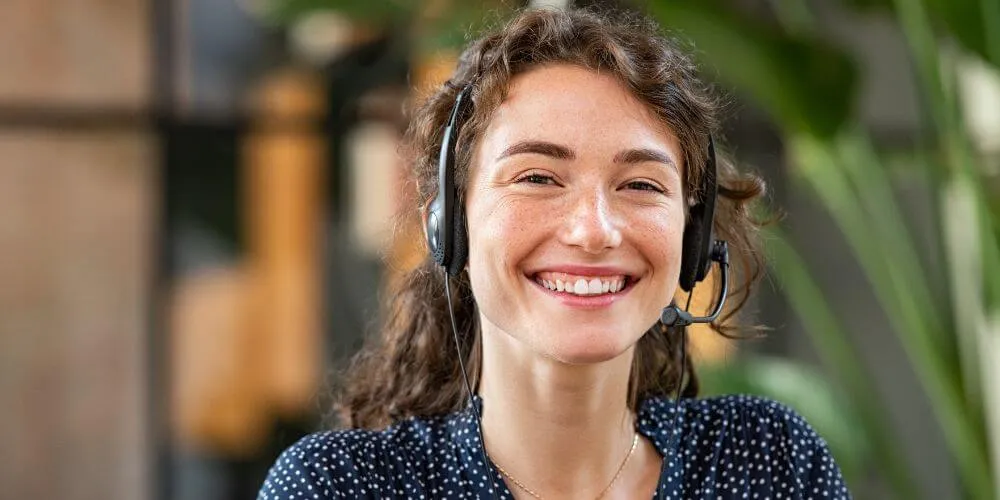A Virtual Medical Receptionist is an automated system that helps medical offices handle customer questions, appointments, and other administrative tasks. Medical offices can save time and money by using this technology, among other things. The receptionist can save your practice time, which is one of the best things about it. By scheduling meetings, sending appointment reminders, and answering patient questions automatically, the system can free up your staff’s time so they can work on more important tasks. This can help the business be more efficient and productive, leading to better patient outcomes and more satisfied patients.
The virtual office can also help save money by eliminating the need for extra staff. Since the system handles routine jobs, your practice can work better with fewer staff. Over time, this can save you a lot of money, which you can put toward other parts of your business, like technology, training, and patient care. Patients can also get better care because of the virtual medical secretary. The system can make it easier for patients to plan appointments and get the care they need by letting them do so online or through a mobile app. This can help improve patient happiness and retention since patients are more likely to return to a practice that makes it easy to get care.
Also, Read this: Virtual Medical Receptionist: How It Can Be Saved Your Practice Time & Money
What is a virtual medical receptionist?

A virtual medical receptionist is a software used in a medical office or healthcare setting to handle administrative tasks and patient contacts. It is usually an automated system that uses artificial intelligence (AI) and natural language processing (NLP) technology to talk to patients through different channels, such as the phone, email, text messages, and online platforms. The receptionist can do many things, like schedule appointments, remind patients of future appointments, answer basic medical questions, give information about services and procedures, and send urgent messages to healthcare providers.
One of the best things about using a virtual medical receptionist is that it can help streamline operations and make it easier for healthcare workers to deal with paperwork. By automating routine jobs, healthcare workers can spend more time giving patients high-quality care. Also, virtual medical receptionists can work around the clock, giving patients access to medical help and information at all times.
Read More ON: Virtual Medical Receptionist: How It Can Be Saved Your Practice Time & Money
Where do medical receptionists work?

Medical receptionists work in hospitals, doctor’s offices, clinics, and other medical centers. They have to greet patients, set up appointments, keep track of patient records, and take care of other administrative chores. Some medical receptionists may also work in places like dentist offices or eye clinics focusing on certain health care. Medical receptionists are crucial to how medical facilities run and ensure patients get the necessary care.
What are the job duties of virtual medical receptionists?
A virtual medical receptionist is a person who helps healthcare providers and hospitals with administrative tasks from a distance. Usually, their jobs involve:
- Keeping track of patient data.
- Setting up appointments.
- Answering phone calls and emails.
- Working with other members of the healthcare team.
More exactly, virtual medical receptionists may have to do the following:
Setting up appointments: They handle the schedules of healthcare providers’ appointments to ensure patients are seen quickly and effectively.
Keeping accurate records of patients: They keep accurate records, including personal and medical details.
Answering phone calls and emails: They react to questions from patients, healthcare providers, and other stakeholders by giving them helpful and accurate information.
Coordinating with healthcare staff: They work closely with doctors, nurses, and other healthcare staff to ensure patients get the necessary care.
Taking care of administrative tasks: They do various administrative tasks, like billing, processing insurance claims, and entering data.
The benefits of hiring in virtual medical receptionist

In healthcare facilities worldwide, virtual medical receptionists are becoming more and more common. These receptionists are trained professionals who work from home and help healthcare workers with administrative tasks. Here are some reasons why your healthcare center should hire a virtual medical receptionist:
Cost-effective: Hiring a virtual medical receptionist costs less than hiring an in-house secretary. You can save money on payroll taxes, staff benefits, and other related costs.
Increased productivity: Virtual medical receptionists are very good at what they do and can do many things simultaneously. They can answer calls, make appointments, and handle other administrative chores, so your staff can spend more time caring for patients.
Improved patient satisfaction: Patients value prompt and efficient communication. Receptionists can react quickly and professionally to questions from patients, giving them the best experience possible.
Flexibility: Medical receptionists who work from home can set their hours, including nights and weekends. This can give your people longer hours of service.
Scalability: As your healthcare facility grows, you can easily add receptionist services to meet your needs without spending more money or running out of room.
FAQs: virtual medical receptionist
What does a robotic medical receptionist do?
A virtual medical receptionist is a piece of software or artificial intelligence that does the work of a real receptionist from a faraway location. It can schedule meetings, answer phone calls, and answer questions from patients without any help from a person.
How does a virtual medical receptionist help?
Automating administrative chores allows a virtual medical receptionist to save time and money for an office. It can make patients happier by giving them access to scheduling and support 24 hours a day, seven days a week.
What does a robotic medical receptionist do?
A virtual medical receptionist uses artificial intelligence (AI) algorithms and natural language processing (NLP) to understand and answer customer questions. It can be connected to other software systems, like electronic health records (EHRs), so the user experience is smooth.
What kinds of things can a robotic medical receptionist do?
A virtual medical receptionist can do many different things, like set up appointments and remind people about them, refill prescriptions, take in and register new patients, check insurance, and answer commonly asked questions.
Is a virtual medical receptionist safe and up to HIPAA standards?
Yes, a HIPAA-compliant receptionist can be made to be safe and private. It can protect patient information with encryption and secure data storage. It can be set up to limit access to protected health information (PHI) based on the role and rights of the user.
Can a computerized medical receptionist take the place of a real one?
A virtual medical receptionist can do many of the same things as a real one, but it can’t match the personal touch and care that a real one can give. But it can free up people to work on more complicated jobs and give better care to patients.
conclusion
Virtual medical receptionists are a new way for healthcare providers to improve patient experience and make administrative jobs easier. These digital assistants use high-tech tools like artificial intelligence and natural language processing to help people quickly and in a way that is tailored to them. Virtual medical receptionists can do many things, like set up appointments, refill prescriptions, and answer patient questions.
